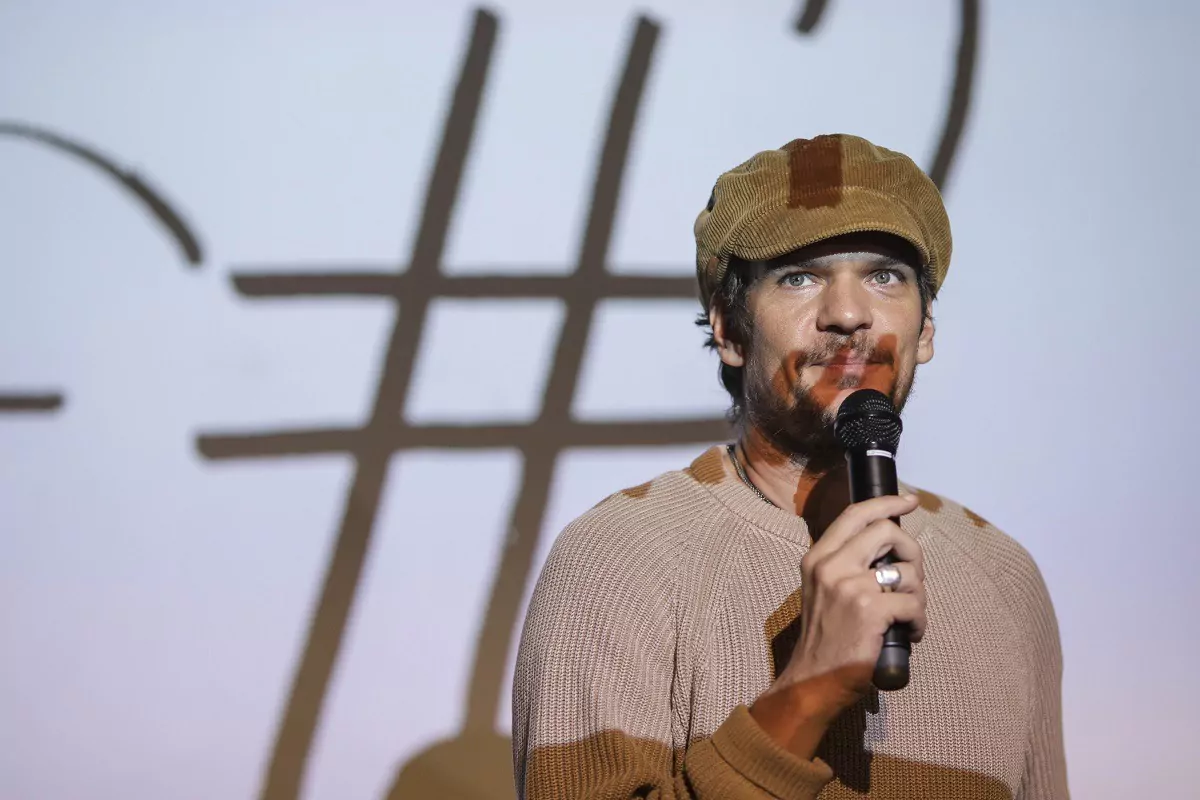For many, art has been the only pillar of support during the pandemic, from movies and music to books and online plays. But the Romanian artists found little support from the state authorities in continuing their work during this difficult period.
Urmărește mai jos producțiile video ale Economedia:
- articolul continuă mai jos -
“No one has received relief compensation, at least for the share of taxes we paid; If I pay taxes but I’m not allowed to perform my activity, I should be compensated, it’s as simple as that. This is a sector where the state has restricted access to work. Some of us are mainstream artists, I have a buffer and I can live off my savings. But our lighting technician had to find work in another industry; he now works at an electricity company because he couldn’t make a living. All the technical teams behind an artist are affected. We have a management agency, and if we lose these people, they won’t com eback. It’s about the ecosystems around the big artists, like technicians, and sound engineers. Of course, these people should be compensated, they were not allowed to work,” says Tudor Chirila, musician, composer, actor, and producer.

Overground Music is one of the lucky few companies that went through the last year of the pandemic without losing any employees.
“We are five people, and in the group, we have two more companies with two employees each, so in total, we are nine. We decided to take a pay cut so that no one left, we did it by rotation: we didn’t want to go on unemployment benefits so that we could still have some activity in the company “, said for Economedia Codrut Dumitrescu, manager of Overground Music, a company that deals with music management (byron, Robin and the Backstabbers, The Mono Jacks, Lucia, and others), PR and other event organization.
But the bills kept on piling, and the company began to return to the state the taxes for the previous year and, for the only source of funding they managed to secure, the SME Invest program, they already started to pay interest.
Overall the Overground Music is a happy case by comparison to thousands of other artists who lost their jobs last year when the state practically banned them from working after closing all theaters, cinemas, and with restaurants operating at limited capacity, where cultural events were difficult to organize.
Europe’s creative sector (which includes TV, film, radio, music, publishing, video games, and the performing arts) fell by 31.2% from 2019 to 2020, according to a study published by the European Group of Societies of Authors and Composers (GESAC). In 2019, there were 7.9 million employees in the cultural sector in the EU (3.7% of total employees), according to Eurostat data. In Romania, the cultural sector had 1.6% of total employees and contributed between 1.5% to 3% to the country’s GDP according to those in the field.
In Romania, the cultural sector was one of the hardest hit during the first months of the pandemic, according to data published by an economist at the Babes-Bolyai University (UBB). During the first wave of the pandemic, most sectors were negatively affected, with the hospitality and tourism sectors falling by 67.4%, while the culture, arts, and other services sectors reaching record lows in the second quarter of 2020 (-67.4% and -60.4%, respectively).
No specific aid for to the cultural sector
The cultural sector has only received “breadcrumbs” from this year’s aid measures announced by the Government in the context of the crisis.
IMM Invest, a program through which small and medium-sized enterprises can access state-backed loans at preferential interest rates, has been the only program the cultural sector had access to. But paying interest, even at preferential rates, is difficult when you don’t produce anything, underlined Codrut Dumitrescu.
Another measure that those in the performing arts could benefit from is the temporary unemployment, through which the state pays 75% of the base salary (but not more than 75% of the average gross salary in the country) to those who keep their jobs.

“Without the temporary unemployment, I don’t know how we could’ve made it past winter,” said the Overground representative.
The other relief programs announced by the government, neither of them tailored specifically to the performing arts sector, are plagued by delays. In Measure #2, payments are made at a snail’s pace, with a maximum of 20 payments per week, and a backlog of 13,000 companies still waiting to receive any payment. As for Measure #3, it will start from scratch, following fraud suspicions, as Claudiu Nasui, the minister for the economy told Economedia. “We applied for measure #2, but so far we have no signal,” said Ada Solomon. “Actually, we don’t know how we will manage if Measure 2 doesn’t arrive soon enough,” Codrut Dumitrescu said.
There is also a measure from the Ministry of Labor through which artists can benefit from a copyright allowance, for those who had income exclusively from copyright contracts. They get a 4,000 lei gross allowance per month, out of which 1,700 lei is withheld in taxes. “However, only those who had contributions in the past can receive money. It is a social protection mechanism offered by the Romanian state for those who paid taxes in the past “, explained Codrut Dumitrescu.
The government discontinued the aid programs it had in place before the pandemic
Not only that the cultural sector could not benefit too much from the general relief measures initiated by the government during the pandemic, but the government stopped even those industry-specific assistance programs it had for the arts sector before the crisis.

Take for example the National Cultural Fund Administration, which periodically finances cultural projects, and last year it launched a financing program with a budget of 15 million lei. “We applied for two projects during the fall of last year. The program was to start on January 1 and run until September-October. We are in March now and we haven’t signed any contract with the state authority; They didn’t send us the contract yet“, said Codrut Dumitrescu.
In the film industry, the situation is no better, where the two financing programs that started before the pandemic are also stalled.
The law 50 of April 27, 2020, by which the state redirects 4% of funds collected from taxing gambling activities to a fund cinematographic production is yet to be applied, as it’s still missing the application methodology, almost a year after its enactment, Ada Solomon specified.
“We have assurances from the Ministry of Culture and from the Prime Minister’s Office that efforts are being undertaken to unblock this mechanism, which would be a source of oxygen for the film sector and especially for national productions,” the film producer said.
The thorny problem of state-aid schemes for the culture industry
The Ministry of Culture announced at one point, together with Bucharest Mayor Nicusor Dan, that it will help the cultural sector, and that they will also be coming up with the first proposal in this regard. “It was such a crooked scheme that only the big players – like the festivals – would have won up to 800,000 euros while any other company would only have gotten 4,000 euros; and absolutely nothing for artists “, says Codrut Dumitrescu.
After the announcement, several representatives from the creative industry, including Tudor Chirilă and Codrut Dumitrescu, participated in a series of debates to improve the project. What came out was a series of state aid and de minimis schemes worth 100 million euros, meant to support both companies in the independent cultural sector and individual artists, but also bookstores, publishing houses, cinemas, and organizers of festivals and cultural events.
The proposal has been launched for public debate, but nothing happened since. On March 8, the Ministry of Culture announced that the state aid and de minimis schemes dedicated to the cultural sector were sent to the Ministry of European Investments and Projects, to be included in the investment priorities of Romania’s National Recovery and Resilience Plan (PNRR).
However, the only chapter dedicated to the cultural sector in PNRR is the “Creative Romania” component, dedicated to the creative industries, with a budget of only 77 million euros. Therefore, not only were the financing schemes of the cultural sector not fully included for funding in the PNRR, but they were pooled together with other sectors, under the broader umbrella of the “creative” industry.
What the Ministry of Culture says
„For the financial aid schemes dedicated to the cultural sector in Romania, the public debate phase has been completed, so that, at this date, the last adjustments are made as a result of the numerous proposals received from the cultural entities. As soon as possible, the aid schemes will go on the internal and inter-ministerial approval circuits. The budget needed to finance the schemes is EUR 100 million.
We do not have an official answer related to the final content of the ‘Creative Romania’ component at this time, but certainly, a large part of the state aid schemes will be financed through this component.
For part of the financing not covered by the Resilience Plan, discussions are taking place in the governing coalition regarding the source of funds that can come from external or national sources”, has been underlined in a message from the Minister of Culture Bogdan Gheorghiu, transmitted to Economedia.
“This sector can no longer resist”
Though in the last year the cultural sector has remained somewhat afloat, in the future this industry will certainly not be able to resist without support from the authorities or without the state relaxing some of the restrictions.
“What our leaders do not understand is that this sector can no longer resist,” said Tudor Chirila.
Ada Solomon believes that people are tired, depressed, and in a state of uncertainty and they need the cultural sector to restart. “In all this period in which the world has consumed a lot of audiovisual products, it is time for people to have direct access to entertainment in the performance halls, in movie theaters. Of course, I’m not unconscious, I know what time we find ourselves in. But the performance hall is a different kind of place, with an audience that is responsible and that will certainly respect the measures, measures that will be observed more strictly by the owners of performance halls than the owners of pubs and clubs. I think that the best thing we can do now is to offer them direct access to this type of emotion, to this escape from everyday life that the artistic act represents”, says the producer.
Translated by: O.H.

 Sursa foto: Unsplash
Sursa foto: Unsplash





























